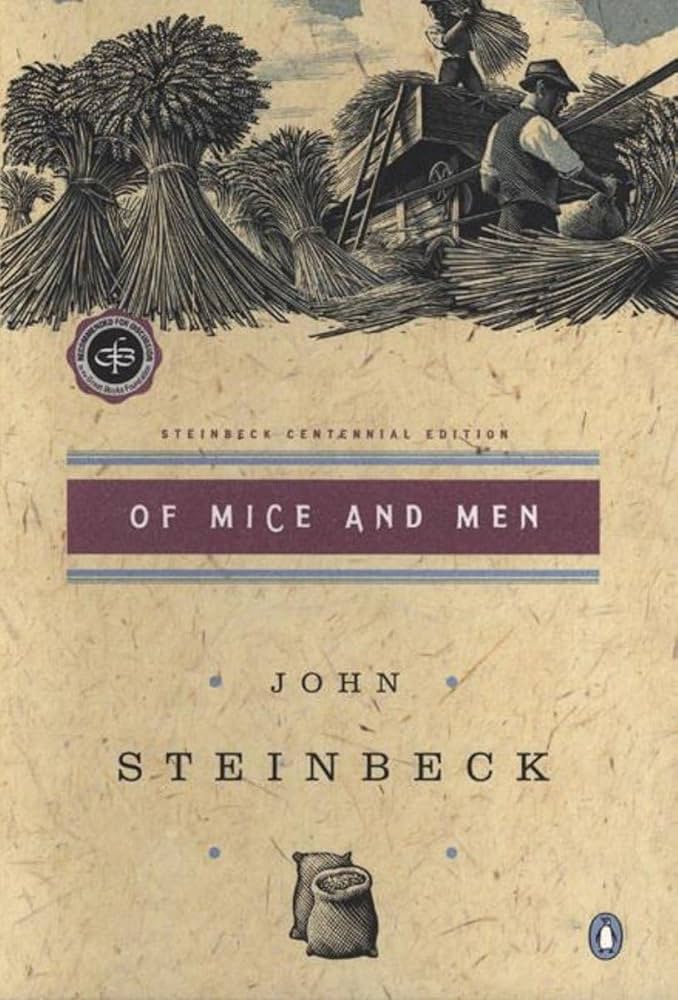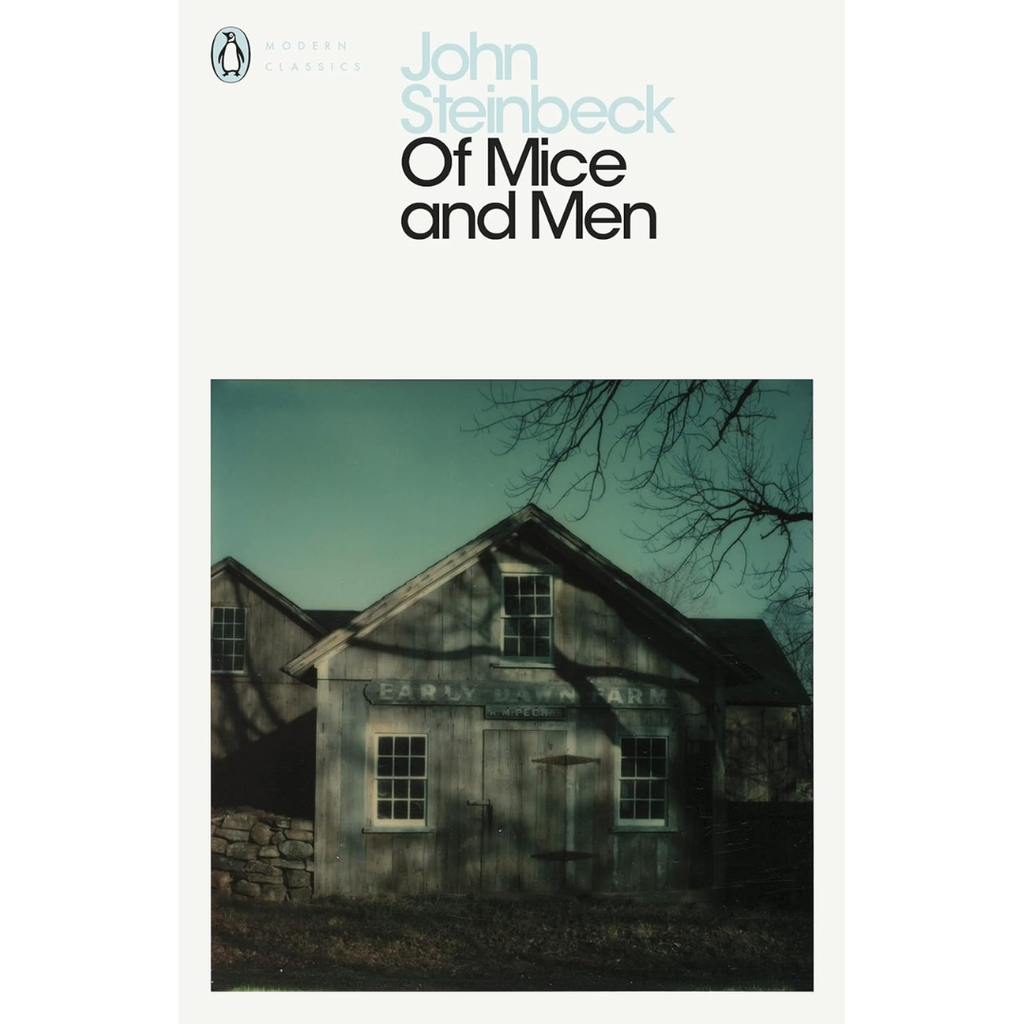Of Mice and Men: A Deep Dive into Steinbeck's Classic Novella

John Steinbeck’s Of Mice and Men is a poignant novella that transcends its relatively short length to explore profound themes of friendship, loneliness, the American Dream, and the harsh realities of the Great Depression. Its enduring popularity stems from its powerful characters, evocative imagery, and starkly realistic portrayal of a marginalized segment of society. This article will examine Of Mice and Men through several lenses, exploring its literary merit and lasting cultural impact.
I. Of Mice and Men: Genre and Classification
Of Mice and Men defies simple genre categorization. While often classified as a novella (a work of fiction longer than a short story but shorter than a novel), its structure and themes blur the lines between genres. The stark realism and social commentary place it firmly within literary fiction, while its tightly-knit plot and dramatic scenes lend it a theatrical quality, almost resembling a play in novel form. This duality enhances its accessibility and impact, allowing readers and audiences alike to engage with its complexities on multiple levels. Some might also consider elements of tragedy and social realism present within the novella.

A. Literary Fiction and Social Commentary
The novella’s power lies in its unflinching depiction of the lives of migrant workers during the Great Depression. Steinbeck doesn’t shy away from the harsh realities of poverty, racism, and social inequality, showcasing the vulnerability and desperation of those on the fringes of society. This social commentary is woven seamlessly into the narrative, enriching the characters and their struggles, making their plight relatable and deeply affecting even to modern readers. The human condition is explored in a realistic and unflinching manner.
B. Theatrical Structure and Narrative Drive
Steinbeck’s deliberate structuring of the novella, with its distinct scenes and limited settings, enhances its dramatic impact. The narrative unfolds with a clear progression, building tension and culminating in a tragic yet inevitable climax. This theatrical structure, even noted by Steinbeck himself, facilitates both reading and stage adaptations, contributing to the novella’s enduring appeal across different mediums.
II. John Steinbeck: Authorial Style and Influences

John Steinbeck’s distinctive writing style plays a crucial role in the novella’s success. His prose is characterized by its simplicity, directness, and evocative imagery. He masterfully employs descriptive passages that paint vivid pictures of the setting, contrasting the harsh realities of the landscape with the inner lives and aspirations of the characters. This juxtaposition enhances the emotional depth of the story and accentuates the characters’ struggles against their environment.
A. Simple Prose and Evocative Imagery
Steinbeck’s unadorned prose avoids unnecessary embellishment, allowing the emotions and themes of the story to speak for themselves. This directness is particularly effective in conveying the characters’ raw emotions and the starkness of their circumstances. Simultaneously, his use of descriptive language is not overstated, but precisely chosen, painting evocative images in the reader’s mind. This style allows the reader to easily follow the storyline and focus on the developing emotions between the central characters.

B. Character Development and Psychological Depth
Despite its brevity, Of Mice and Men features richly developed characters. George and Lennie’s complex relationship forms the emotional core of the novella, showcasing the intricacies of friendship, loyalty, and responsibility. The supporting characters, though less extensively developed, add depth and complexity to the social landscape, representing the various facets of loneliness and alienation in the migrant worker community. Each character, even in their limited portrayal, evokes empathy and understanding.
C. Symbolism and Themes
Steinbeck masterfully employs symbolism throughout the novella to enhance its themes. The ranch itself becomes a symbol of the elusive American Dream, while the recurring motif of death, symbolized by Candy’s dog and Lennie’s accidental killings, underscores the fragility of life and the inevitability of loss. The characters’ dreams, despite their simplicity, represent the universal human desire for belonging, security, and purpose. The symbolism in this novella allows for much debate and discussion about the meanings behind some of the central symbols.
III. Reading Of Mice and Men: Summaries, Educational Value, and Life Lessons
Of Mice and Men tells the story of George Milton and Lennie Small, two itinerant workers during the Great Depression. George, a small, quick-witted man, cares for Lennie, a large, intellectually disabled man with childlike innocence and immense strength. Their shared dream of owning a small farm fuels their arduous journey through the harsh realities of ranch life. The novella meticulously builds tension and expectation, showcasing their dream of owning a farm. However, Lennie’s accidental killings, fuelled by his innocent misunderstanding of his immense strength, lead to a tragic climax that forces George to make an agonizing decision.
A. Plot Summary and Key Events
The novella unfolds in a series of interconnected scenes, mostly set on a California ranch during the Great Depression. The plot is straightforward but powerfully rendered. Key events include their arrival at the ranch, the development of relationships with other workers, the encounters with Curley’s wife, the tragic death of Curley’s wife, and the ultimately heartbreaking resolution. The reader is given an insight into the minds of the characters, and their interactions throughout the novella.
B. Educational Value and Literary Analysis
Of Mice and Men is widely used in educational settings for its exploration of complex themes relevant to young and adult readers alike. Students can analyze its literary merit through close reading, studying its language, character development, symbolism, and themes. The novella also serves as a springboard for discussions on social justice, disability rights, and the enduring power of the American Dream. This novella is an excellent piece of literature to study the human condition.
C. Life Lessons and Themes
The novella offers powerful life lessons. It shows the significance of human connection and the devastating impact of loneliness and isolation. It also explores the fragility of dreams and plans, especially in the face of harsh realities and societal prejudice. The story’s tragic ending, however, is not without hope, highlighting the enduring power of friendship and compassion in the face of adversity. The themes of loneliness and friendship are deeply explored in this novella.
IV. Of Mice and Men: Cultural Impact and Adaptations
Of Mice and Men’s impact extends far beyond its pages. It has been adapted into numerous successful stage plays and films, further solidifying its place in American literature and popular culture. Its themes of friendship, loneliness, and the struggles of the working class have resonated deeply with audiences across generations, making it a continually relevant and compelling story.
A. Stage and Film Adaptations
The novella’s adaptability to different mediums speaks volumes of its inherent dramatic power. Multiple film and stage adaptations have captivated audiences, each adding its unique interpretation to Steinbeck’s tale. These adaptations have further amplified the novella’s reach, bringing its powerful message to a wider audience.
B. Literary Influence and Critical Reception
Of Mice and Men has significantly influenced subsequent literary works, inspiring authors to explore similar themes of social injustice, human connection, and the pursuit of dreams in the face of adversity. It also continues to be the subject of critical analysis and discussion, ensuring its place in the canon of classic American literature. The novella has endured as a timeless and impactful story.
C. Awards and Recognition
The novella’s critical acclaim has been considerable, including multiple awards. Its enduring legacy is cemented through its continual study in educational settings. The novella remains a highly regarded and studied piece of American literature.
V. Conclusion: The Enduring Legacy of Of Mice and Men
John Steinbeck’s Of Mice and Men, despite its brevity, remains a powerful and moving work of literature. Its exploration of universal themes, coupled with its compelling characters and evocative language, continues to resonate with readers and audiences worldwide. Its lasting impact is a testament to Steinbeck’s mastery of storytelling and his ability to capture the complexities of the human condition during a time of profound societal change. The novella is sure to remain an impactful story for many years to come.